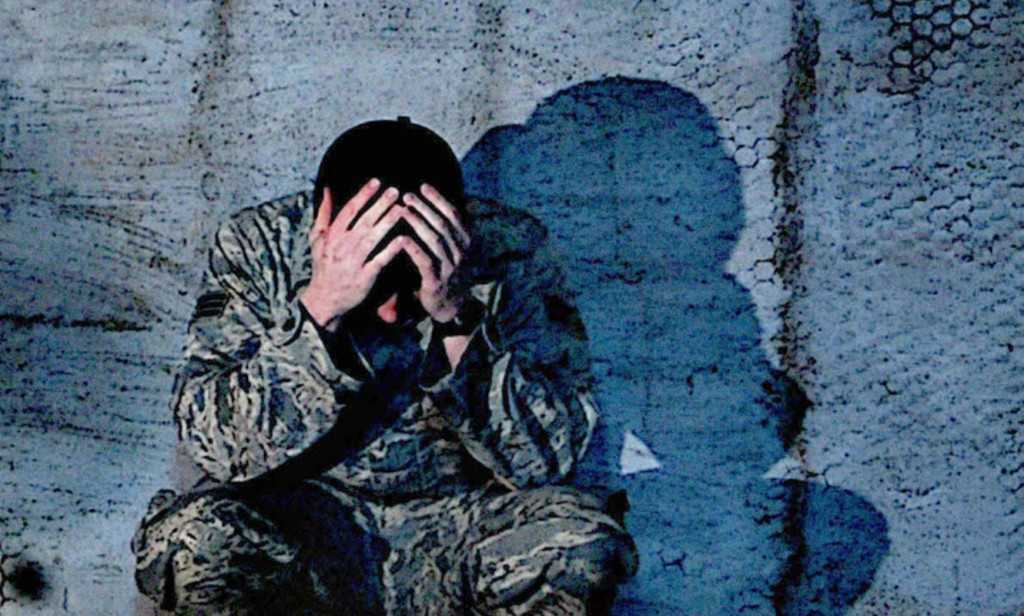What Do You Do Now?

You’re never ready for war. You train for months, sometimes years — to fight an enemy. It’s an enemy you learn inside and out: You learn what he does, where he sleeps, what he eats, what he thinks and how he feels. You receive countless hours of training to better understand your enemy, and one day the call comes in: It’s time to go. But all the training in the world cannot prepare you for what is coming. You are thrown into a nightmare that someone has created for you. It’s a living, breathing thing that has one purpose — to destroy you. Each day brings a new mission, a new set of circumstances, another enemy to seek out and eliminate. Days turn into nights — into weeks, months and years.
The war is over. They send you back home to face a new enemy: society. They don’t tell you this is also a war, though; they call it re-integration. Only this time, they don’t give you months of training. They don’t tell you who the enemy is or what to look out for. They expect you to revert back to your previous life, but in truth you can’t. The old life, the life before — it’s gone. It has been replaced, and you don’t recognize any of the new life. You find that it’s not so easy to adjust to “normal” life because now you’ve been trained and sent to fight. Now the war is over. But truly the war isn’t over; it still takes place every moment of every day in your mind.
The new enemy — your memories — is relentless in combat, unyielding in battle, and never lets up. The images haunt you. They have been seared into your mind like a branding iron — a permanent, indelible vision of the nightmare you lived, the nightmare created for you, which now belong to you. The sights, the smells, the noises, are all grafted into your being, and are now a part of your DNA. They are all there every time you close your eyes. You are transported in the blink of an eye to your own private war. But you are alone in this war; the brothers and sisters who stood by your side in combat have moved on, withdrawn, abandoned their posts, and left you isolated to fight your own battles. You used to know who the enemy was, who could be trusted and who watched your back. Now you see the enemy everywhere you look, in every face, in everyone you come in contact with. Every time you close your eyes you’re there, back on the battlefield, making even the most mundane exercises such as sleep turn into a hostile environment.
The only problem is that you don’t have any weapons, you haven’t been trained in this form of combat, and most people cannot begin to understand the battle that takes place in the dark recesses of your mind. You hear their voices calling out to you — asking how you’re feeling, how you’re coping, if you need to talk about what happened during the war — unable to comprehend that the war is not over. They tell you everything will be okay, they sympathize with you and give you simple advice on how to combat it, as if for one fleeting moment they could fathom the depths of your struggle. You wake up at night kicking and screaming as your own mind betrays you into believing you’re not home at all, you’re still there. The images replay in your mind like a skipping record — a sad song breaking your heart with every note. You close your eyes, take a deep breath and say a silent prayer — but when you open them, you’re right back there again.
This new war cannot be won with firepower. This new enemy cannot be contained by building walls or calling in air support. No, this enemy is ruthless. It doesn’t care where you are, what you are doing, what you are thinking or how you feel, and its only purpose is to destroy you. There is no battle plan, no mission, no training on how to defeat this enemy. There is only you and your thoughts, and the war shows no signs of resolution as the onslaught surges toward the ultimate conclusion. So now what do you do?
Tod Belt served in the U.S. Navy during Desert Storm/Desert Shield and again in the U.S. Army during OEF/OIF. He is a member of the Hampton Roads Veterans Writing Group, an initiative of the Armed Services Arts Partnership.
Photo credit: Airman 1st Class Corey Hook, U.S. Air Force

